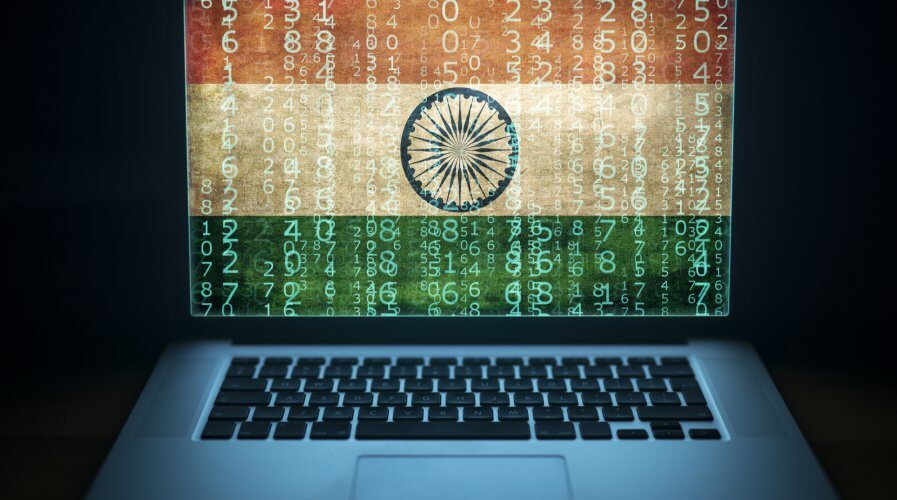
Citizens have gotten used to digesting data. Source: Shutterstock
How the pandemic made big data mainstream in India
- Big data has become pervasive in India, as the country keeps track of COVID-19 infection rates and other data metrics
- The newfound interest in data analytics should eventually be harnessed by the government and other organizations to promote digital growth in other aspects of Indian industry and governance
India is one of the countries most sorely affected by the coronavirus pandemic, with over 343,000 confirmed cases of infection and nearly 10,000 fatalities.
The tallies put India as currently the fourth-worst nation in terms of impact, but there are signs of a recovery, with Union health ministry data indicating that the recovery rate has now crossed the 50% mark with approximately 163,000 patients recovered so far.
The Indian cities of Delhi and Mumbai now have among the highest recovery rates in the world with 38.36% and 46.65% recovery rates, respectively. This sort of statistical analysis has become commonplace in the Indian subcontinent in the past few months, and the Indian public who were used to receiving ‘Good Morning’ memes and forwarded messages in their WhatsApp chat groups (India has by far the biggest number of WhatsApp users in the world) now instead wake up to data infographics showing the latest updates surrounding the outbreak in their country.

Dr. Bruce Aylward of the WHO uses data graphics on COVID-19 to make a point. Source: AFP
Understanding big data
COVID-19 has changed the ways that Indians live their lives in various aspects, one of which is the newfound understanding and acceptance of data sets among the public. No longer just considered lines on a histogram, the average urban Indian has now become adept at following data-driven trends surrounding the pandemic, and terms such as ‘infection rates’, ‘mortality rates’, ‘flattening the curve’, and ‘exponential growth curve’ have all become standard terms in the lexicon of everyday conversation.
In fact, much like other parts of the world, charts and data concepts have become the defacto method of imparting information related to the coronavirus and ongoing efforts to stem its deadly effects. For example, graphs showing COVID-19 infection rates, overlaid with the known healthcare capacity of an affected region, help the public to understand and grasp how social distancing and contact tracing measures can help limit outbreaks of new infections.

Graph illustrating why ‘flattening the curve’ is essential to limiting infection. Source: Hindustan Times
Tapping big data to influence development?
The use of big data is by no means new in the country, with data mining techniques being used by the Indian government and corporations for some time now. Yet for a country as large as India, data analytics has not been utilized to its fullest extent to aid with the planning, policymaking, or development of various sectors in the country such as agriculture and urban planning.
Data analytics does not require assembling resource-intensive, data-collection methods like surveys to gather information on the expansive region. Instead, data can work with artificial intelligence (AI) capabilities to run predictive models that can generate data digitally, and then be automatically compiled and analyzed in real-time – yielding faster, actionable data that organizations and businesses can use to inform other operational decision-making.
Using agriculture as an example, big data could help study crop growth patterns, analyzing the best times to plant that would yield the highest crop production, study weather and seasonal patterns to determine best planting times, and so forth.
The relevance of data, especially when paired with other technologies like AI, fast connectivity like 5G, and IoT-connected devices such as sensors to optimize data-gathering, has been widely recognized and enterprises are increasingly relying on its raw processing power along with business intelligence benefits.
With the critical functions that data analytics plays now plain to as a result of COVID-19 graphs and charts, both Indian organizations and civil services need to step up their utilization of valuable data resources at scale.
As the country slowly begins to show signs of recovery, India should take note and perhaps prioritize training their officials in big data skills like other countries in the Asia Pacific region.
READ MORE
- Ethical AI: The renewed importance of safeguarding data and customer privacy in Generative AI applications
- How Japan balances AI-driven opportunities with cybersecurity needs
- Deploying SASE: Benchmarking your approach
- Insurance everywhere all at once: the digital transformation of the APAC insurance industry
- Google parent Alphabet eyes HubSpot: A potential acquisition shaping the future of CRM


